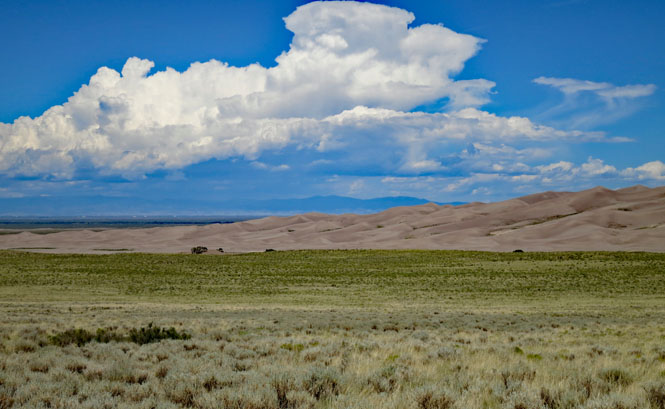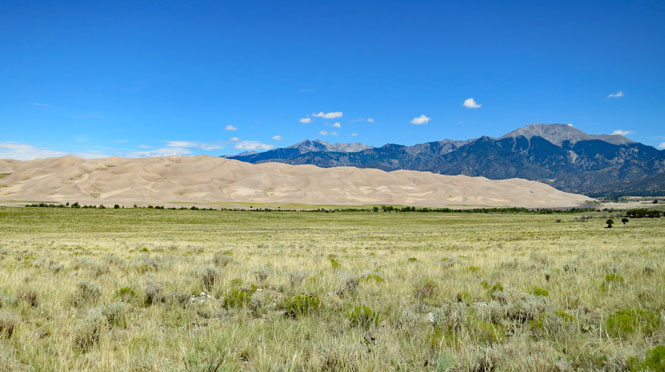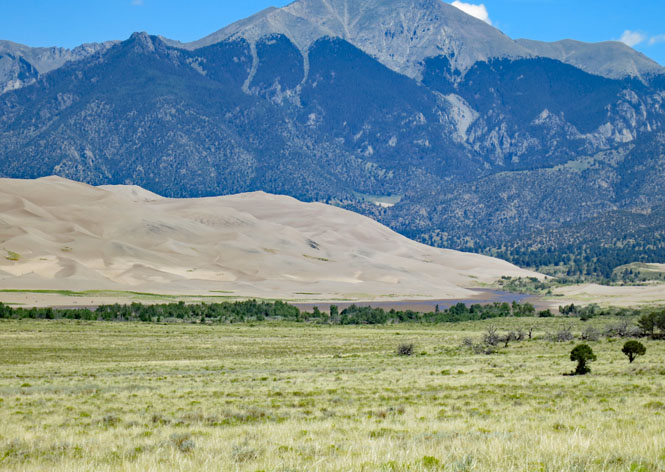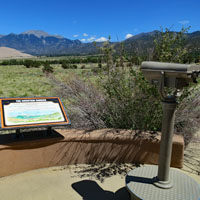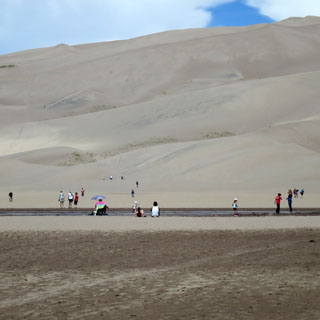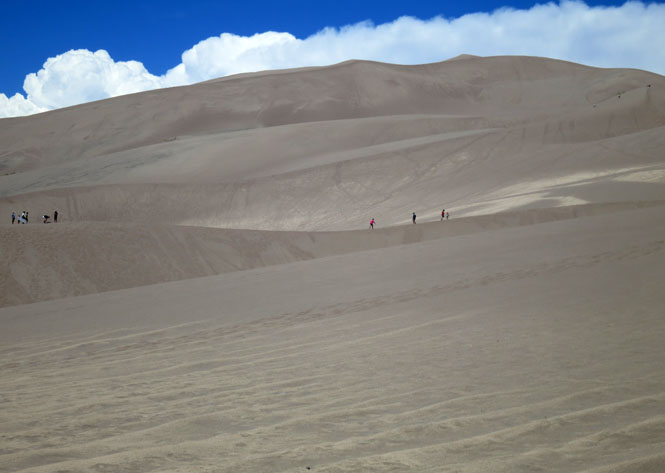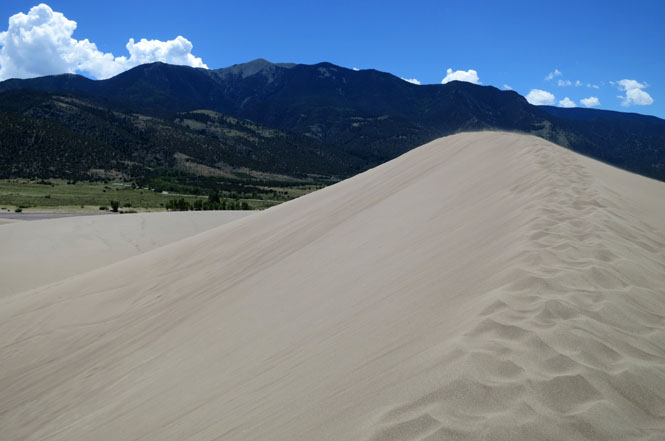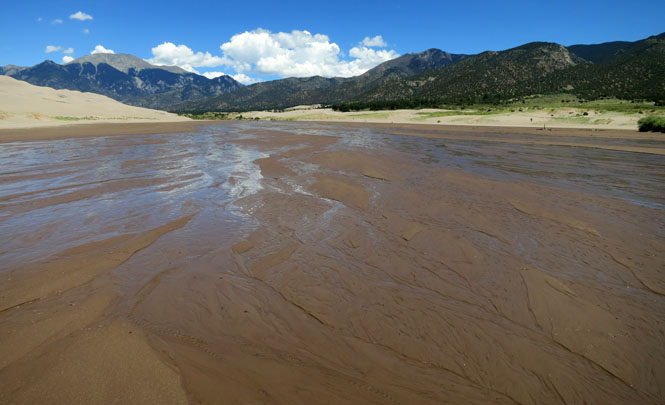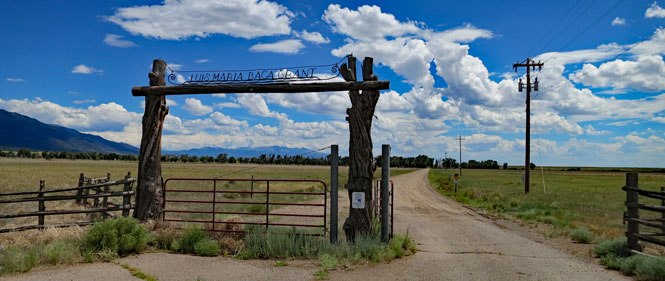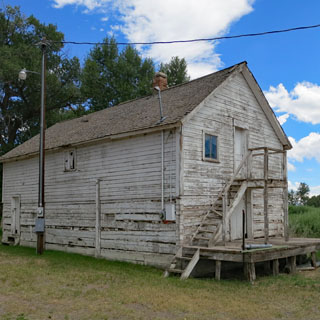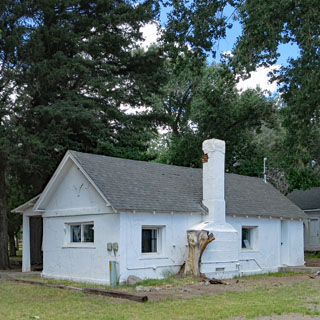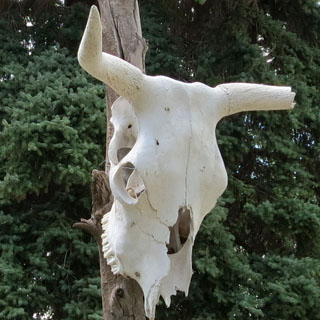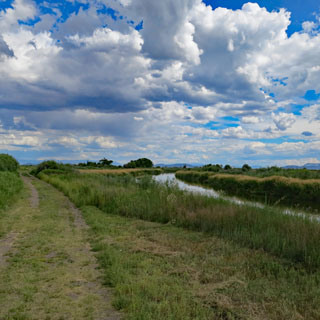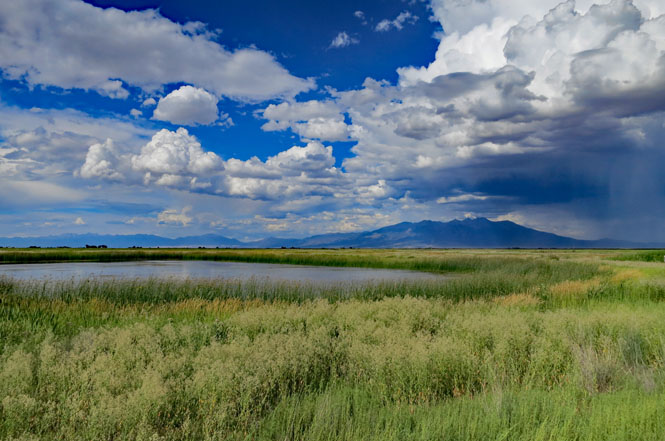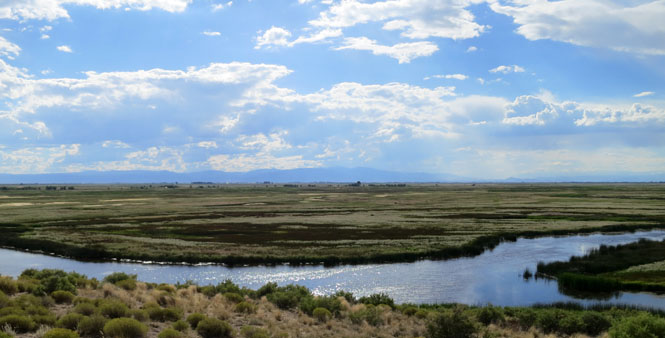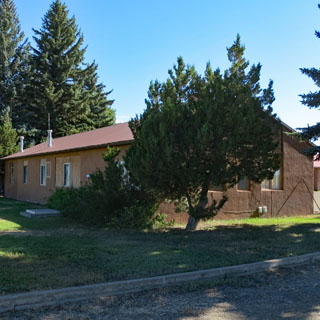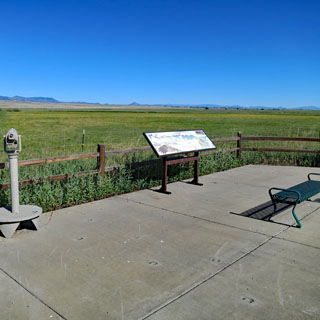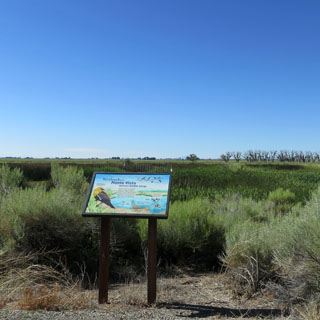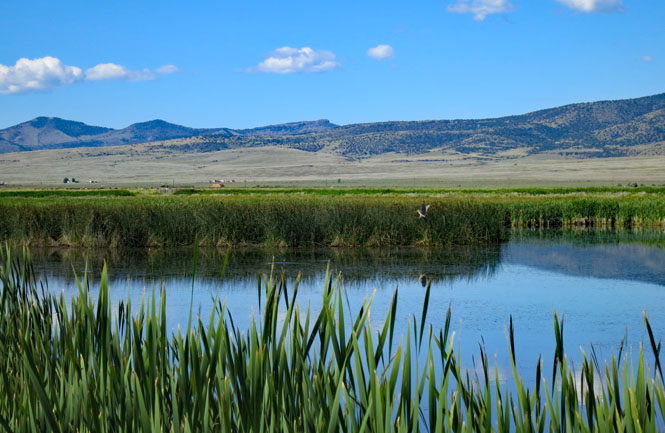July 22, 2016

 Colorado
Colorado
The San Luis Valley is an unexpected high elevation valley between the San Juan Mountains on the west and the Sangre del Cristo Mountains on the east and the young Rio Grande flowing south towards New Mexico.
The (San Luis Valley) farming hub raises potatoes,
alfalfa and carrots, but has become famous for another agricultural product
— Coors barley. The world's largest single-site brewery, Miller Coors, based
in Golden, Colorado, relies on the farms around Monte Vista to produce
special barley for its Rocky Mountain-style beer.
--Colorado.com
website
 Great Sand Dunes National Park
& Preserve
Great Sand Dunes National Park
& Preserve
These dunes are the tallest in North America. The area was made a National Park in 1932.
The idea that the Dunes could be destroyed by gold
mining or concrete-making alarmed residents of Alamosa and Monte Vista. By
the 1920s, the Dunes had become a source of pride for local people, and a
potential source of tourist dollars for local businesses. Members of the
Ladies P.E.O. sponsored a bill to Congress asking for national monument
status for Great Sand Dunes.
Widely supported by local people, the
bill was signed into law in 1932 by President Herbert Hoover. Similar
support in the late 1990s resulted in the monument’s expansion into a
national park and preserve in 2000-2004.
--NPS website
Looking west cross the San Luis Valley with a distant view of the San Juan Mountains, sixty five miles away.
The Great Sand Dunes with part of the Sangre de Cristo Range behind.
Is there ever a crowded season?
Medano Creek sets the western boundary of the dunes; they will move no farther. The creation of the dunes requires a special set of circumstances that will 1) lift the sand, 2) drop the sand, 3) maintain the position of the dunes. Tucked close to these high mountains (yet with a passage for the prevailing wind), the conditions are perfect.
The visitor center.

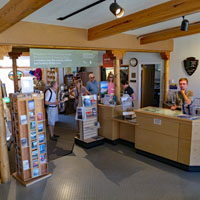
There are times of the year when the creek is flowing, but today it was easily crossed.
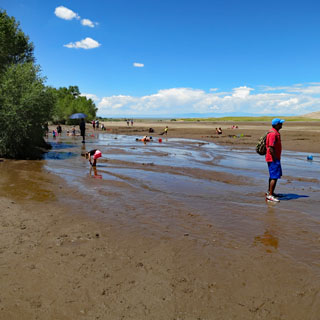
Do not think that climbing to the top is easy. And that ridgeline is not yet even the top.
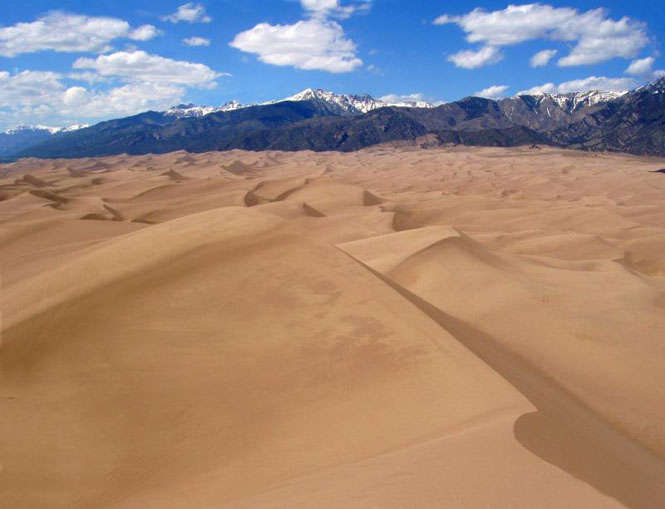
photo credit: NPS website
Walking the ridge line is easier than the slope, but it's not a sidewalk.
Looking back at Medano creek. Any sand that ventures that far will be swept downstream.
Crestone Peak (14,300 feet), part of the Sangre de Cristo Range, viewed from the site of the Spanish Land Grant Luis Maria Baca ranch. This ranch would become the Baca National Wildlife Refuge.
I saw this wildlife refuge on the map, but was not aware that it was not open to the public. Not knowing this was a good thing, because on the day I was there, the gate was open and people were making ready for the grand opening to occur the next day.
The 92,500 acre Baca Refuge is located in the
northeastern part of the San Luis Valley. The Refuge has a diverse
combination of shrublands, grasslands, wet meadows, playa wetlands, and
riparian corridors. This Refuge was set aside not only as an additional
haven for migratory birds and resident wildlife, but also for its importance
in a broader conservation effort to protect the wildlife, habitat, and water
of the northern San Luis Valley. The Refuge also contains the rich
archeological telling of over 12,000 years of use by humans, including the
extensive history of the famed Baca Grant Ranch.
--NWR website
Some of the buildings of the old ranch headquarters. This is to be the site of the administrative headquarters and visitor center for the refuge.
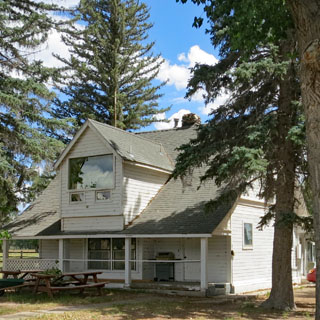


 Alamosa National Wildlife
Refuge
Alamosa National Wildlife
Refuge
Alamosa National Wildlife Refuge’s mission is to
provide food, cover, and breeding habitat for migratory birds and resident
wildlife. The Refuge conserves and enhances the wetland and desert habitats
found in the area to accomplish these goals. The 11,169 acre Refuge is
located at the south end of the San Luis Valley, a high mountain basin in
south-central Colorado.
Alamosa Refuge lies within the Rio Grande
floodplain and consists of wet meadows, old river oxbows, riparian
corridors, and dry uplands vegetated with greasewood and rabbitbrush and
other drought tolerant plants. These diverse habitats support a multitude of
songbirds, water birds, waterfowl, raptors, mule deer, beaver, and coyotes.
The west side of the Refuge borders the Rio Grande, long considered the life
blood of the San Luis Valley. Water from to Rio Grande and irrigation canals
maintain these important habitats. Mallards, pintails, teal, and Canada
geese are common, as are American avocets, killdeer, white-faced ibis,
egrets, and herons.
--NWR website
There is a nice visitor center, but unfortunately it is closed. Funding for the entire system of wildlife refuges is scarce, so I suppose visitor facilities (and staffing) must take a backseat to the primary function: wildlife management.
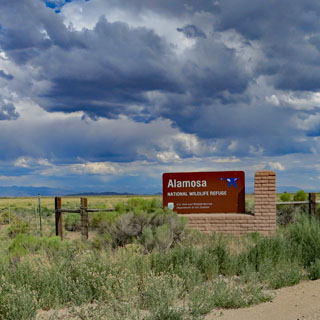

The plain of the Rio Grande is quite wide even if the river isn't all that large. There are dozens (hundreds?) of oxbow lakes that are no longer directly connected to the river. The water (below) is one such lake even though it looks every bit a river. Today, it's an important resting stop for migrating birds.
 Monte Vista National Wildlife
Refuge
Monte Vista National Wildlife
Refuge
Monte Vista National Wildlife Refuge is located in
the San Luis Valley, a high mountain basin located in south-central
Colorado. It’s one of three national wildlife refuges in the Valley that
provides crucial feeding, resting, and breeding habitat for over 200 bird
species and other wildlife.
The Refuge’s wetlands are artificially
made and intensively managed to provide habitat for a variety of waterfowl
and other water birds. Water from irrigation canals and wells maintain this
important wetland habitat. Mallards, pintails, teal, and Canada geese are
common, as are American avocets, killdeer, white-faced ibis, egrets, and
herons.
Sandhill cranes, Canada geese, and a variety of other
waterfowl migrate through the Valley, congregating in wetlands and
grasslands to rest and refuel for their journey to wintering grounds on the
Gulf Coast. Resident deer and elk, coyotes, porcupines, and beaver are found
on the Refuge year round. Migrating deer and elk herds move from higher
elevations to the valley floor.
--NWR website
As with Alamosa NWR, the visitor center is closed (for the same reason).
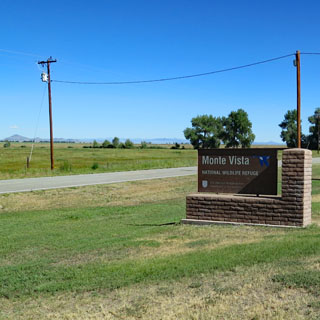
When the cranes arrive, you might see a few Whooping Cranes along with the hundreds of Sand Hill Cranes. Here's why:

